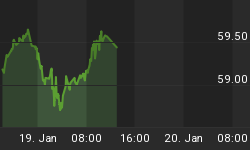Global semiconductor industry sales reached a record $555.9 billion last year, up 26% year on year, the highest ever annual total for the industry.
The Semiconductor Industry Association’s (SIA) new report states that China remains the biggest market with sales totaling $192.5 billion in 2021, up 27%.
While China is still the biggest market, North American sales saw the largest increase last year with a 27.4% jump, followed by Europe with 27.3% growth.
Semiconductor manufacturers have kicked things into gear to ramp up production to meet demand amid a worldwide chip shortage, which prevented those sales from being even more astounding than they were. Companies, in the end, failed to meet the demand.
Needless to say, all the companies in the industry reported best-ever quarterly and full-year revenue, but they also spent $146 billion last year on R&D and building new production capacity.
“Demand for semiconductor production is projected to rise significantly in the years ahead, as chips become even more heavily embedded in the essential technologies of now and the future,” John Neuffer, SIA president and CEO, said.
Last February, U.S. President Joe Biden said domestic semiconductor manufacturing was a priority for his administration. To that effect, he signed an executive order meant to address the global chip shortage.
Earlier this month, the US Senate passed the America COMPETES Act, aimed at increasing U.S. economic competitiveness with China. The main ticket of the bill includes $52 billion in grants and subsidies for the semiconductor industry and $45 billion to improve supply chains.
Earlier this month, The European Union announced its European Chips Act that will enable $17 billion in additional public and private investments until 2030
Even though it relies on foreign technology, over the past couple of years, China has also focused on increasing its domestic chip sector.
Three decades ago, the U.S. manufactured about 37% of the world's semiconductors. Today, it only makes about 12%. Europe also dropped from producing 35% to only 9%.
On the other hand, Taiwan Semiconductor Manufacturing Company (TSMC) currently controls 51% of the global chip market.
Aside from the state-level race for the chip production dominance, the companies are also trying to position themselves.
The largest chipmaker in the United States, Intel, has just announced its acquisition of Israeli company Tower Semiconductor for $5.4 billion in a move aimed to expand its manufacturing capacity. Last year, Tower had annual sales of about $1.3 billion
Another U.S.-based chipmaker, Advanced Micro Devices (AMD), whose CEO recently said that the semiconductor shortage would not end this year, also completed its $35-billion acquisition of California-based chipmaker Xilinx.
Earlier this month, Texas Instruments revealed plans to invest $3.5 billion annually in its U.S. semiconductor chip manufacturing in the next three years.
Last year, TSMC announced the start of construction of a $12 billion factory in Arizona. In addition to that, the company said it would invest $100 billion over the next three years to increase production capacity.
South Korea’s Samsung hasn’t announced any major acquisitions this year, but it said that for the past year it spent nearly 90% of its capital expenditure of $40 billion in the chip business.
















